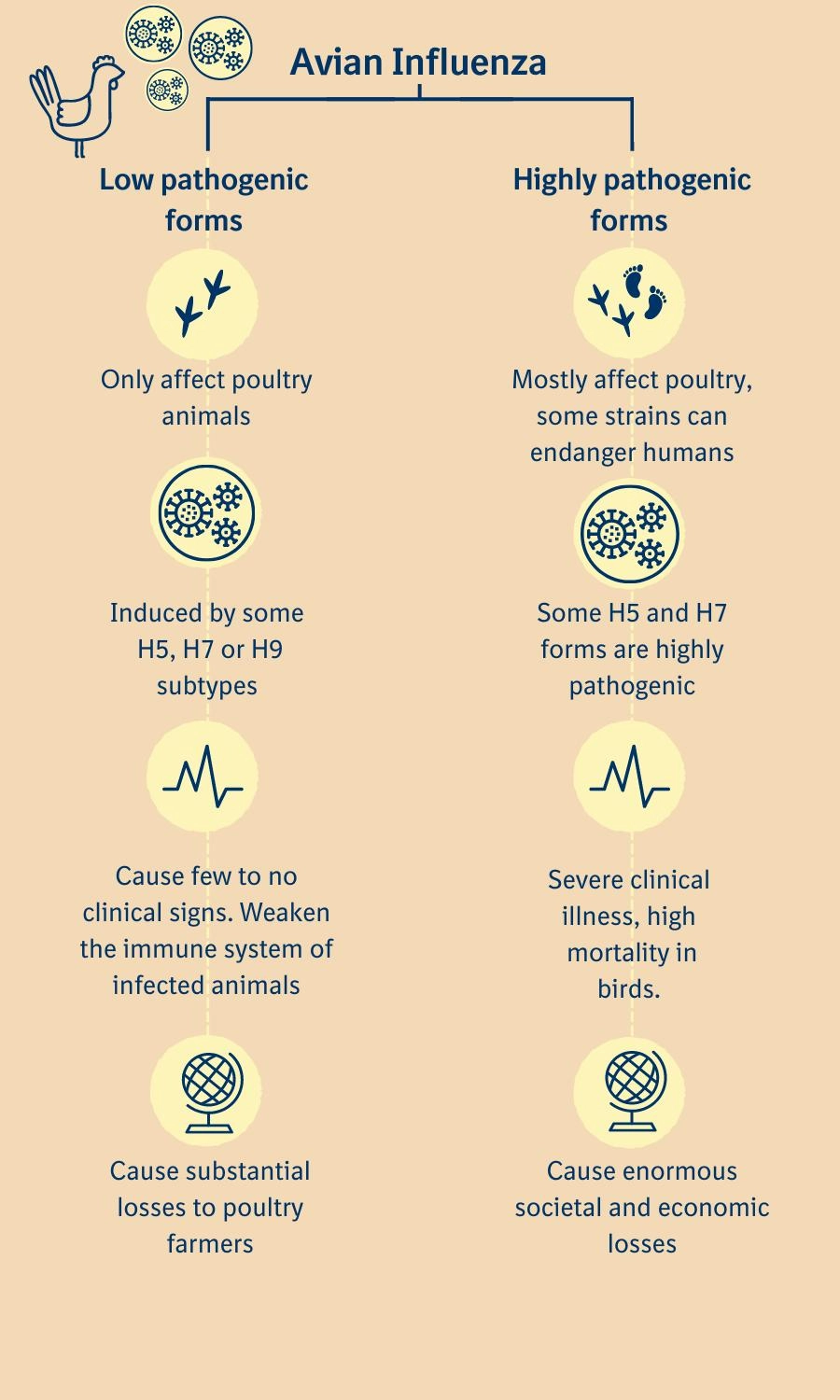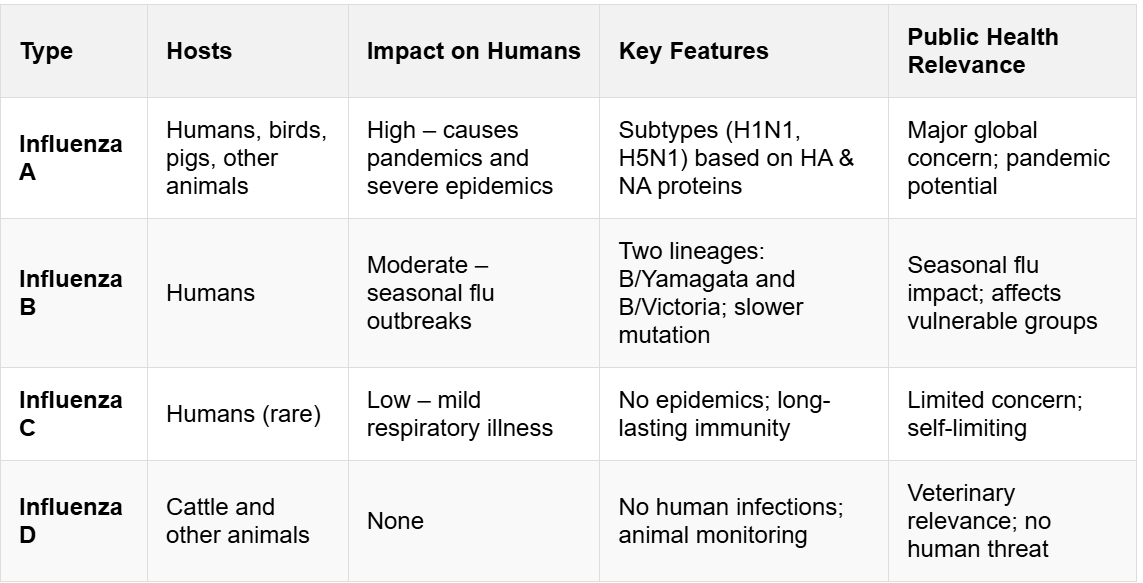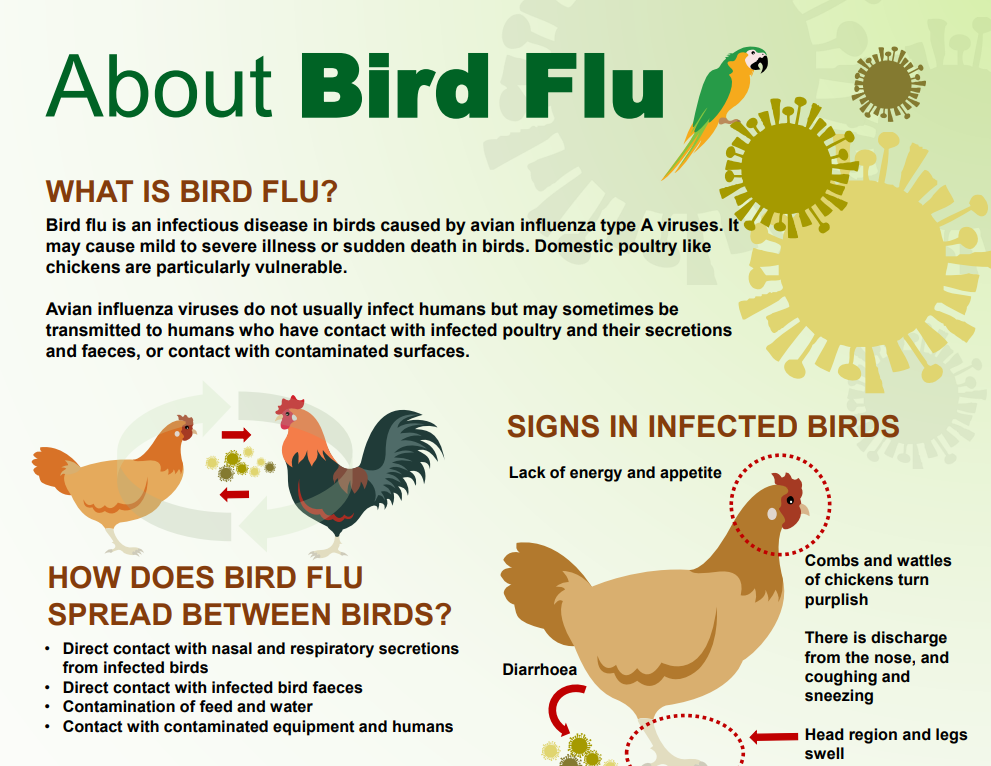Important Facts For Prelims
Bird Flu
- 07 Apr 2025
- 3 min read
Why in News?
A casualty was observed in Andhra Pradesh from bird flu virus marking India’s second recorded human fatality from H5N1 since 2021.
What is Bird Flu?
- About: Bird flu, or avian influenza, is a highly contagious viral disease that affects both wild and domestic birds.
- It is caused by avian influenza A viruses, with subtypes such as H5N1 and H5N8 being particularly significant.
- History of Human Cases: First human cases were reported in 1997 (Hong Kong). Most have occurred in Asia and were linked to close contact with infected birds.
- Between 2003 and February 2025, the World Health Organization (WHO) has recorded 972 cases of confirmed H5N1 influenza.
- Transmission: H5N1 spreads primarily through direct contact with infected live or dead birds or contaminated environments (e.g., live bird markets).
- Rarely, transmission from infected mammals to humans has been observed. Though human infections are rare, H5N1 has a high fatality rate (~60%), much higher than the peak fatality of Covid-19 (~3%). Also, airborne transmission has not been confirmed in humans.
- Human-to-human transmission remains extremely rare. The virus continues to evolve, and if it mutates to allow sustained human-to-human transmission, it could trigger a global pandemic.
- Hence, H5N1 is listed as a priority disease under WHO R&D Blueprint.
- Symptoms: Common symptoms include high fever, cough, sore throat, and muscle aches.
- Severe cases can lead to respiratory failure or neurological complications. Some individuals may remain asymptomatic despite exposure.
- Treatment: Antiviral drugs like oseltamivir are effective, especially when administered early in high-risk or severe cases.
- Vaccination: Current seasonal flu vaccines do not protect against H5N1.
- Some countries have developed H5N1-specific vaccines for emergency use.
- Strains of Avian Influenza Viruses:
What are Influenza Virus Types?
UPSC Civil Services Examination, Previous Year Question (PYQ)
Prelims
Q. H1N1 virus is sometimes mentioned in the news with reference to which one of the following diseases? (2015)
(a) AIDS
(b) Bird flu
(c) Dengue
(d) Swine flu
Ans: (d)
Q. Which of the following statements is/are correct? Viruses can infect (2016)
- bacteria
- fungi
- plants
Select the correct answer using the code given below:
(a) 1 and 2 only
(b) 3 only
(c) 1 and 3 only
(d) 1, 2 and 3
Ans: (d)







